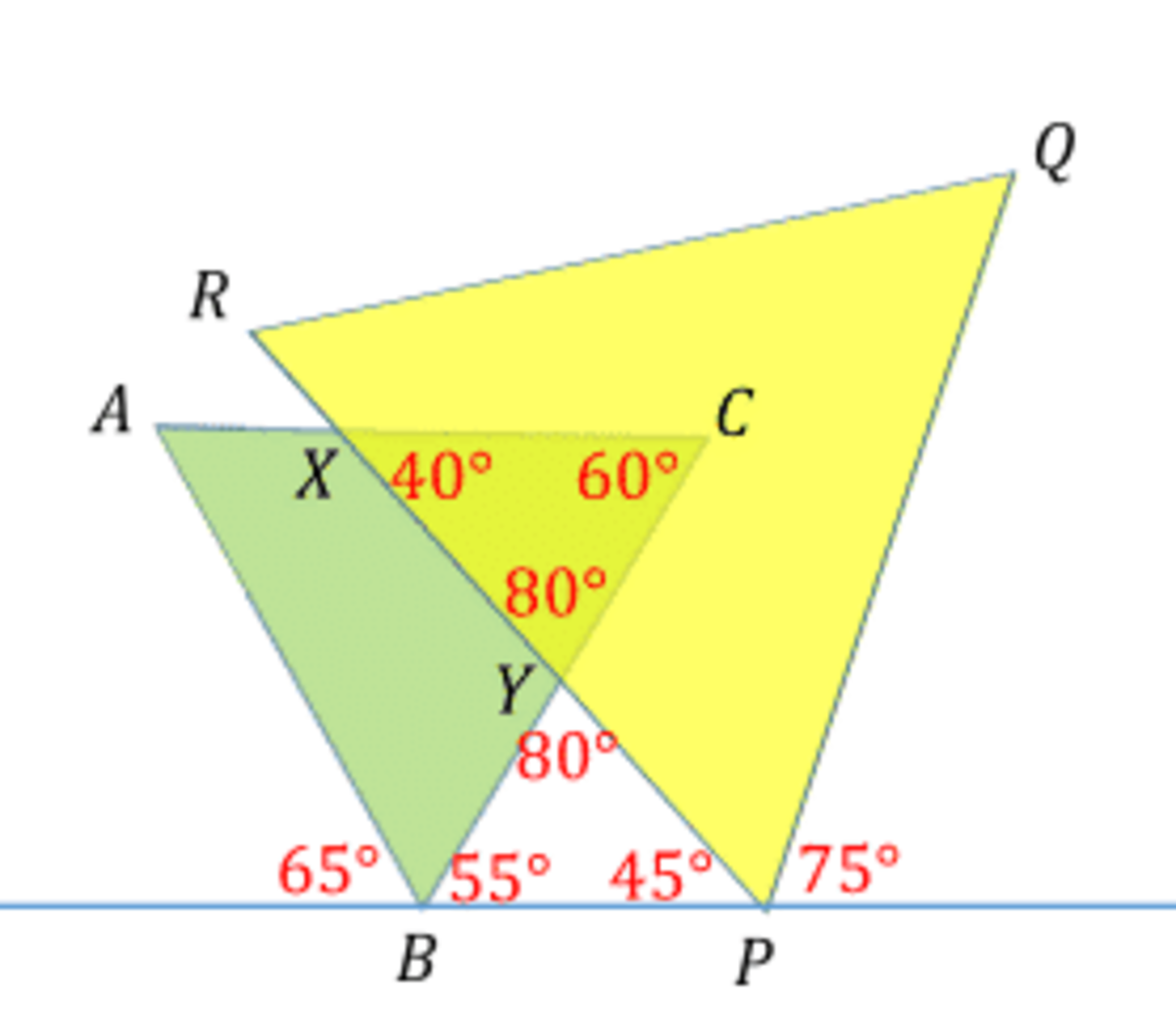A geometry problem by Hana Wehbi
In the diagram, if △ A B C and △ P Q R are equilateral, then find the measure of ∠ C X Y in degrees.
Image and Problem: CEMC
This section requires Javascript.
You are seeing this because something didn't load right. We suggest you, (a) try
refreshing the page, (b) enabling javascript if it is disabled on your browser and,
finally, (c)
loading the
non-javascript version of this page
. We're sorry about the hassle.
2 solutions
But the problem still requires a logical solution, some figures may not be drawn to scale so a method would be handy in these situations.
 The three angles above the horizontal line at
P
have to add up to
1
8
0
∘
, so
∠
B
P
Y
=
1
8
0
−
6
0
−
7
5
=
4
5
∘
.
The three angles above the horizontal line at
P
have to add up to
1
8
0
∘
, so
∠
B
P
Y
=
1
8
0
−
6
0
−
7
5
=
4
5
∘
.
The same has to be true at point B , giving us ∠ P B Y = 1 8 0 − 6 0 − 6 5 = 5 5 ∘ .
Angles in the triangle P B Y have to add up to 1 8 0 ∘ , to ∠ B Y P = 1 8 0 − 4 5 − 5 5 = 8 0 ∘ .
∠ C Y X = ∠ B Y P = 8 0 ∘ .
Angles in the triangle X Y C have to add up to 1 8 0 ∘ , to ∠ Y X C = 1 8 0 − 8 0 − 6 0 = 4 0 ∘ .
Nice solution. Thank you for posting it.
I used a protractor. And I got ∠ C X Y = 4 0 ° .